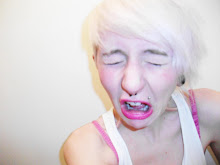Friday, February 12, 2010
Colour Theme.
Uses and Gratifications Theory
Audience demographics.
Hierarchy of Needs

Psychologist Abraham Maslow first introduced his concept of a hierarchy of needs in 1943. This hierarchy suggests that people are motivated to fulfill basic needs before moving on to other needs.
Maslow’s hierarchy of needs is most often displayed as a pyramid. The lowest levels of the pyramid are made up of the most basic needs, while the more complex needs are located at the top of the pyramid. Needs at the bottom of the pyramid are basic physical requirements including the need for food, water, sleep and warmth. Once these lower-level needs have been met, people can move on to the next level of needs, which are for safety and security.
As people progress up the pyramid, needs become increasingly psychological and social. Soon, the need for love, friendship and intimacy become important. Further up the pyramid, the need for personal esteem and feelings of accomplishment take priority. Maslow emphasized the importance of self-actualization, which is a process of growing and developing as a person to achieve individual potential.
Monday, February 8, 2010
My Target Audience
Wednesday, February 3, 2010
Possible names for my magazine






